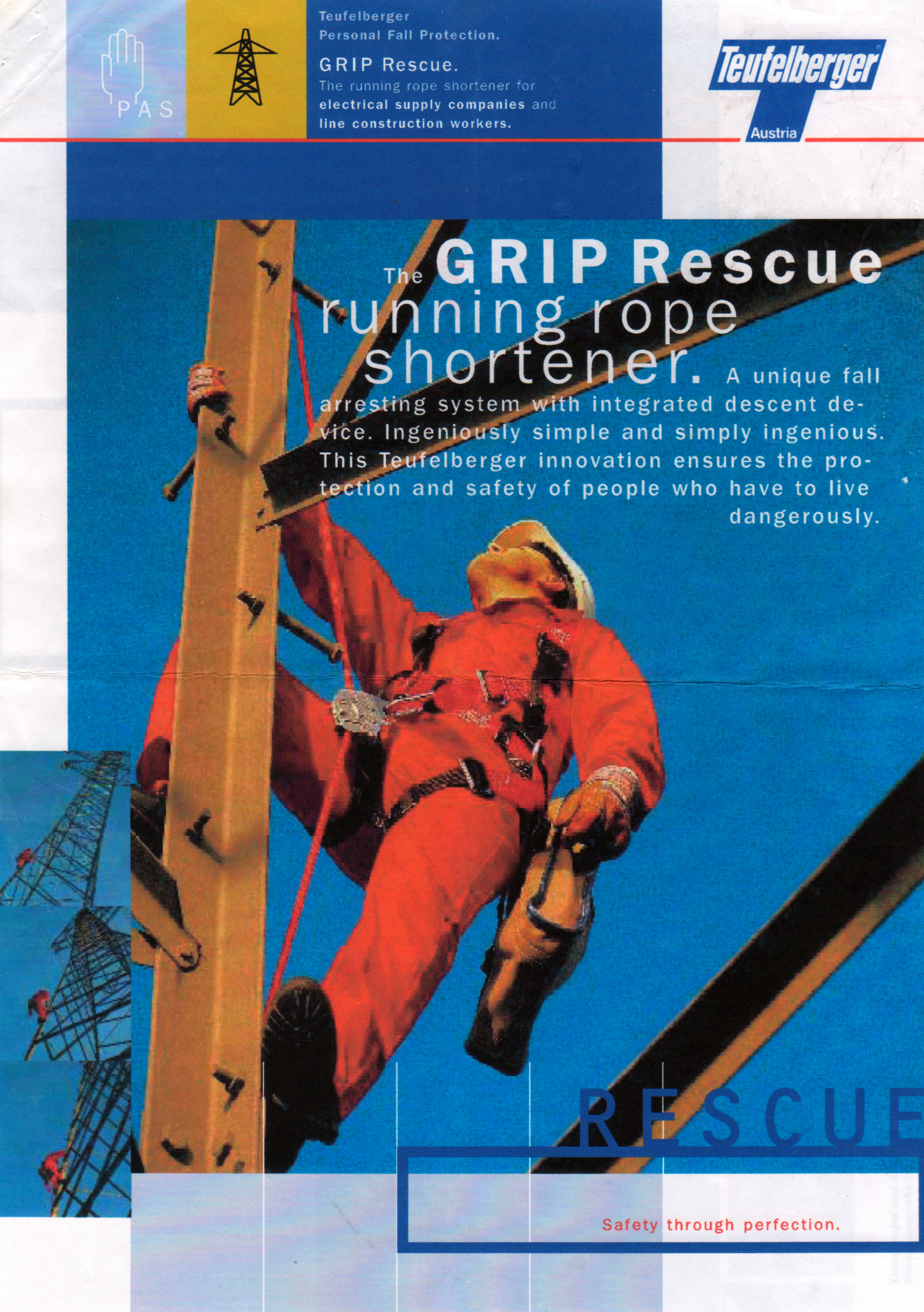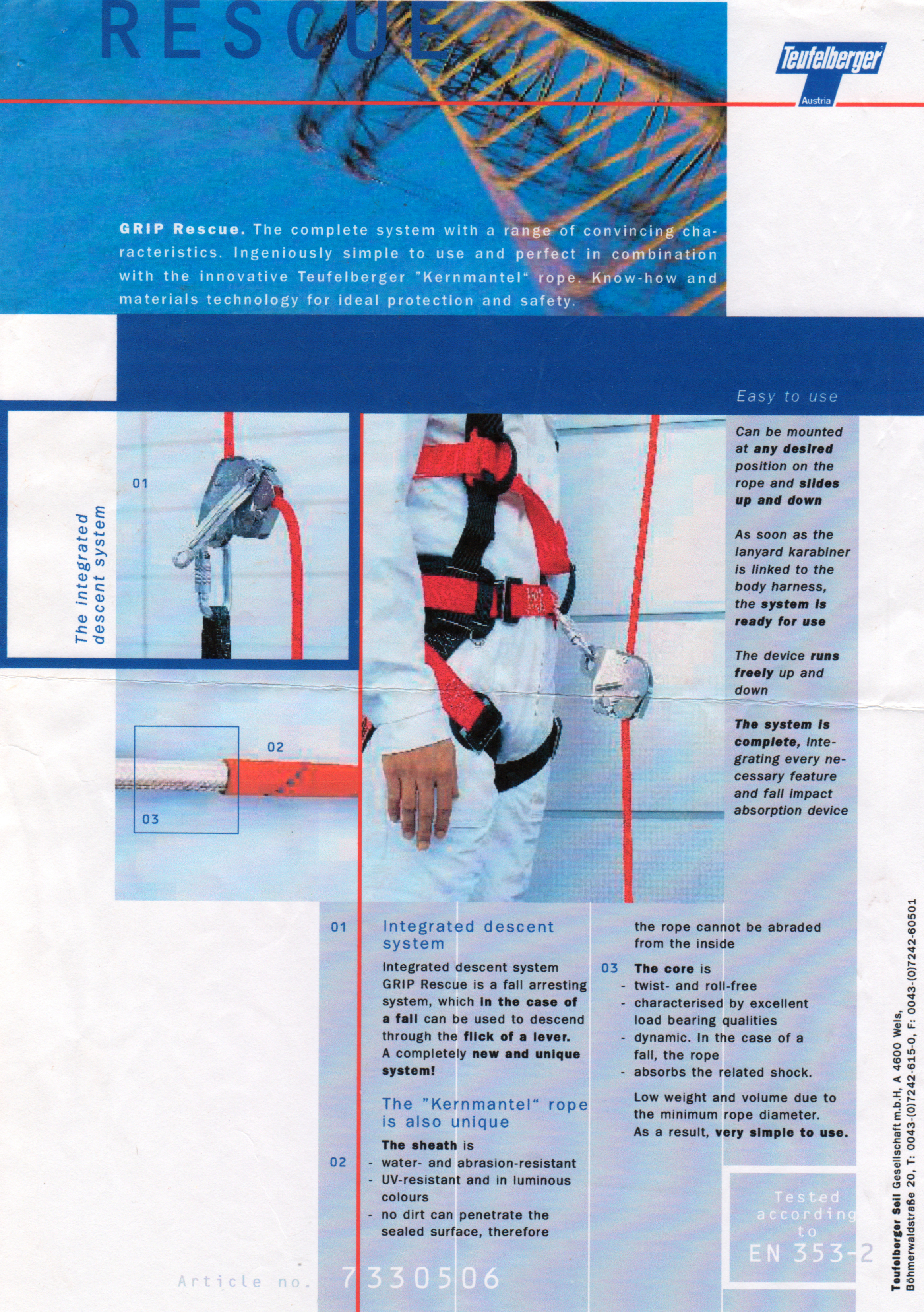Technical Details
I acquired this device from Dirk-Jan Swier in 2005.
The Grip Rescue consists of three pot-metal castings held between
two stamped steel plates, plus some minor pieces. The front plate
and cam casting pivot on a 6 mm. steel pin near the right side
of the device. The pin extends through the rear plate to form
an axle for a coil spring. One end of the spring fits into a slot
in the back of the cam casting, the other has a loop that allow
it to fit over one of two round-head pins projecting from the
rear plate. When on the top pin, the spring acts to close the
cam; on the bottom, it acts to open it slightly.
The cam casting is diamond-shaped, with flat faces where it
runs against the rope. The cam presses the rope against a flat
face on an anvil casting pinned to the bottom left of the rear
plate. These pins extend above the castings to 12 mm. diameter
heads, leaving gaps to be engaged by a slot cut in the front plate.
The remaining casting is a lever near the top of the rear plate.
A spring rotates the lever counter-clockwise, where a portion
of the rear plate bent in from the attachment point stops further
lever rotation.
The front and rear plates each have reinforcing ribs and an
up-pointing arrow stamped in them. The front plate has
numerous stampings, included a braided rope symbol; "UP,
"HAUT," "AUF" and "ALTO" near the
up-pointing arrow; "USE ONLY ROPE," "UTILISER SEULEMENT
CORDE," "GEBRAUCHEN NUR SEIL," and "USARE
SOLO CORDA" to the left of a large "}
ø12," "TEUFELBERGER," "CE 0639,"
PATENT PENDING," and "GRIP RESCUE." The rear plate is stamped with
"EN-353-2" and "0198."
I don't know what to think. If I rig the device as illustrated
in the information sheet and drop it, it will slide freely down
the rope unless the rear spring is on the top pin - and nothing
on the device tells one to do this. If the spring is on the lower
pin, where one might put it to help rig the device, then the device
may not engage during a fall. In industrial environments, this
failure to "idiot-proof" the device creates an unnecessary
hazard.
The separate lever is a mystery. The information sheet states
that the "Grip Rescue is a fall arresting system, which in
the case of a fall can be used through the flick of a lever" [bold face appears in the original]. There is only one hole that
the lever fits into. When inserted, it can move the cam (a cylinder
on the lever presses against a cylinder on the back of the device),
but only if there is no rope within the device. With a rope in
place, the cylinders cannot come close, let alone meet. This lever
is ineffective on this device. I don't know if this is poor design
or if I just have mismatched parts. The idea looks like it
could work if the parts matched - but they don't. For this reason, I cannot recommend using the Grip Rescue that I own.
The SSE Stop & Go is a similar device that has a lever design that works.

For far more content, use a larger monitor and a full-width window.
Hundreds of cell phone users complained and asked me to for a simpler, mobile friendly site. In particular, they wanted me to limit each page to a small number of pictures and minimize my use of text. This new site provides what they asked for.



